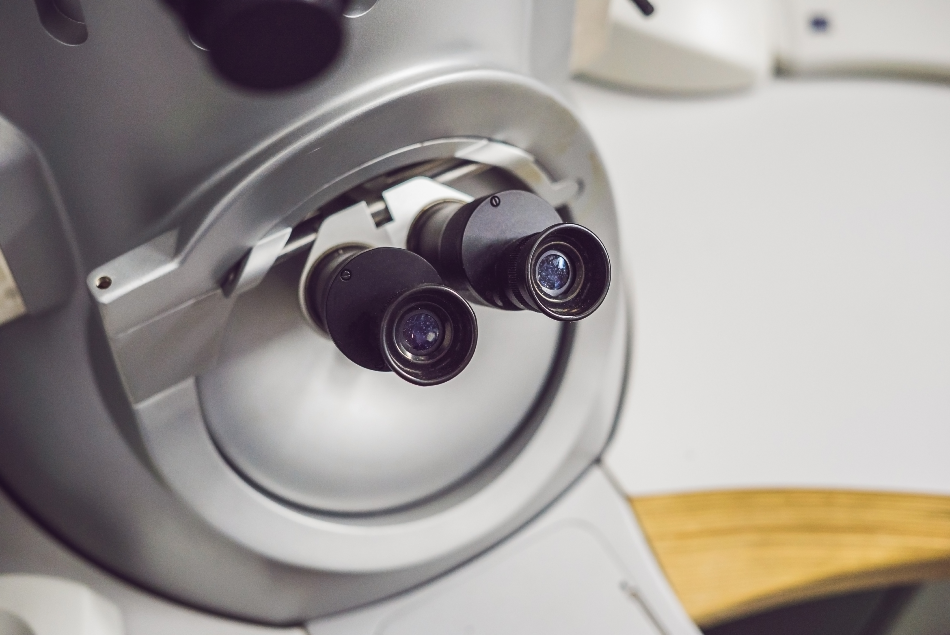
Elizaveta Galitckaia / Shutterstock
The ability to measure nanomaterials, nanoscale features, nano-architectures, and nano-objects has been made possible due to advances in characterization methods over the last few decades. The high-powered electron microscopy techniques have become some of the go-to methods for analyzing nanomaterials due to their exceptionally high resolution and ability to image at the nanoscale. In this article, we’re going to look at how transmission electron microscopy—often denoted as TEM—can be used to measure nano-objects.
There are many definitions to consider when talking about the nanoscale, and nanomaterials can be defined in many ways depending on where in the world you are located—as different geographical regions have slightly different definitions in terms of the dimensions of where nano-objects should be defined. In general, the European Commission (EC) definitions are the most widely accepted, as a lot is done in conjunction with the International Organisation for Standardization (ISO).
A nano-object is defined as something that is in one, two, or three dimensions at the nanoscale, where the nanoscale is between 1 and 100 nm in size (typically with 50% of all nano-objects in a product, dispersion, etc, falling into this range) operating in this range. ‘Nano-objects’ is, therefore, a broad term that encompasses all types of nanomaterials, from 2D materials to quantum dots and quantum wires, to nanoparticle dispersions, and many others in between.
What is Transmission Electron Microscopy (TEM)?
TEM is a technique that is known to have many similar operating principles to scanning electron microscopy (SEM) and this is why the different electron microscopy (EM) techniques are often mentioned together. In TEM, high energy electrons are fired from an electron gun towards the sample being analyzed. The electrons first pass through a series of optical components which helps to focus the electrons onto the sample. The electrons then pass through the sample with minimal scattering (the scattering is not used in many TEM measurement modes). The electrons are then picked up by the detector, which enables an image of the sample to be generated.
The image generation principles are very similar to optical microscopy, but the instrument is designed to image very thin materials and use electrons instead of photons. In addition to generating an image, some of the properties of the sample can be obtained with TEM. When the electrons transmit through the sample, they obtain information about the sample which can be used to back out information about the sample’s crystal structure, morphology and surface stress state.
How TEM is Used to Measure Nano-Objects
TEM is a technique that is ideally suited for the inherent thinness of nanomaterials because the material being analyzed needs to be 500 nm in thickness, otherwise, the electrons will not pass through the material. Therefore, it is a technique that is often used with nanomaterials and ultra-thin films as the thinness enables the more efficient transmission of electrons, and this results in a better resolution. So, while it may be counter-intuitive, the smaller (i.e. thinner) the material, the greater the resolution generally is.
This high resolution means that many different nanomaterials can be imaged alongside their hierarchical structures and specific orientations. This also means that many nanoscale features that are on a surface—such as patterned regions in nanoscale electronic devices—can also be imaged using TEM. TEM is not used for imaging nanomaterials of a single nanomaterial composition either. There are some nanomaterial systems that utilize more than one nanomaterial and utilize the properties of both nanomaterials to provide a greater synergistic effect.
Examples of these materials are hybrid structures composed of different carbon nanomaterials (e.g. graphene-CNT hybrids) and van der Waals (vdW) heterostructures—which are stacked layers of different 2D materials that are not chemically bound but utilize intermolecular interactions to create a layered material. TEM can be used to image these materials and show the presence of both materials, as well as the interfaces where the different materials meet.
Many other different features can also be imaged, and these are often features that are present in/on the nanomaterial and can be used to give a good indication of the nanoscale structure of a material—which is important if the application requires regular and/or repeating features. Some examples of these features that can be imaged include nano-sized pores, the intrinsic nanocrystalline structure of a material, whether any quasi-crystal structures exist, and to identify if any nanoscale defects are present in the nano-object.
TEM can also be used to distinguish between different material forms. Carbon nanotubes (CNTs) are a good example of this as there are single-walled (SWCNTs) and multi-walled CNTs (MWCNTs) as well as other forms within these classes. Another example is to distinguish and identify different nanoparticles in dispersion. Overall, there are many ways in which TEM can be used to image and analyze the properties of various nano-objects, so it is of no surprise that it is one of the go-to techniques for many in the nanotechnology field.
Sources
Disclaimer: The views expressed here are those of the author expressed in their private capacity and do not necessarily represent the views of AZoM.com Limited T/A AZoNetwork the owner and operator of this website. This disclaimer forms part of the Terms and conditions of use of this website.